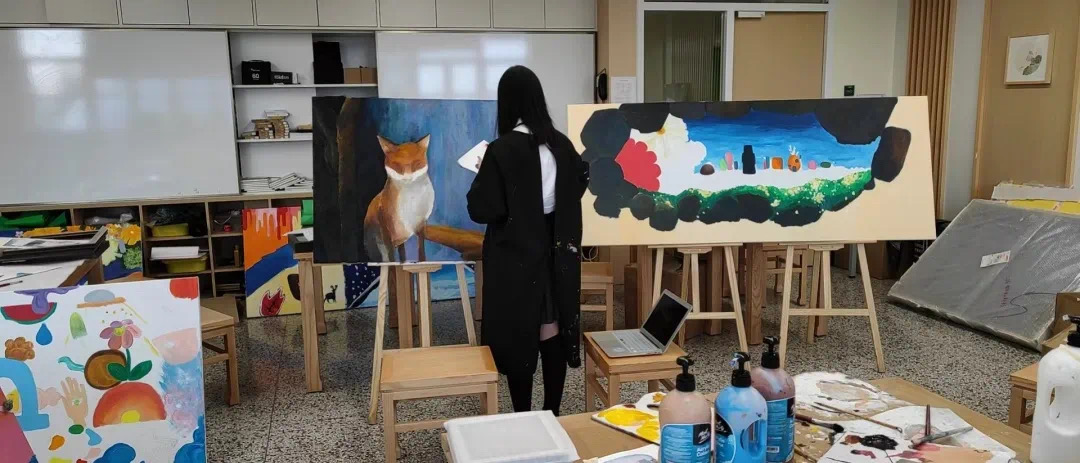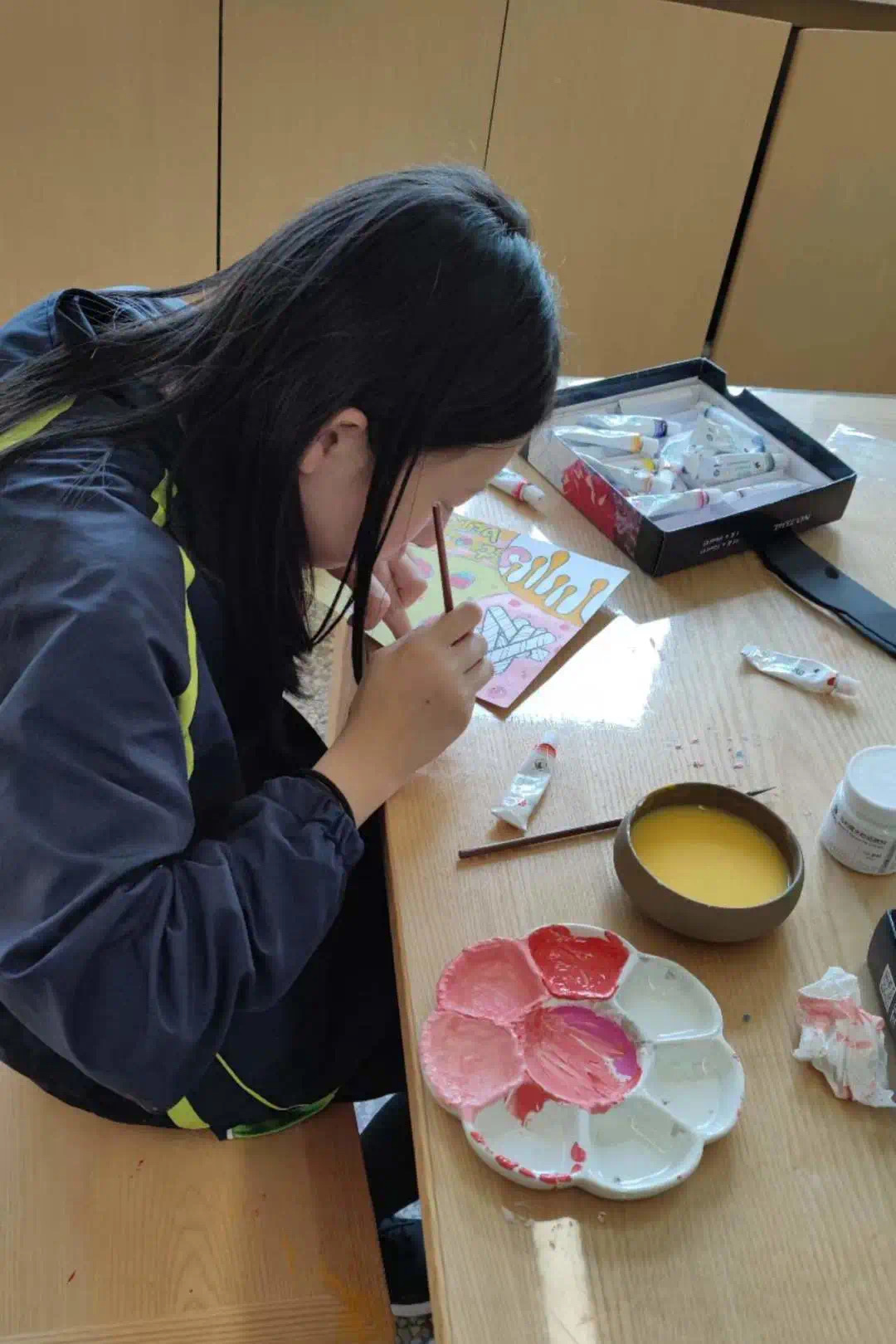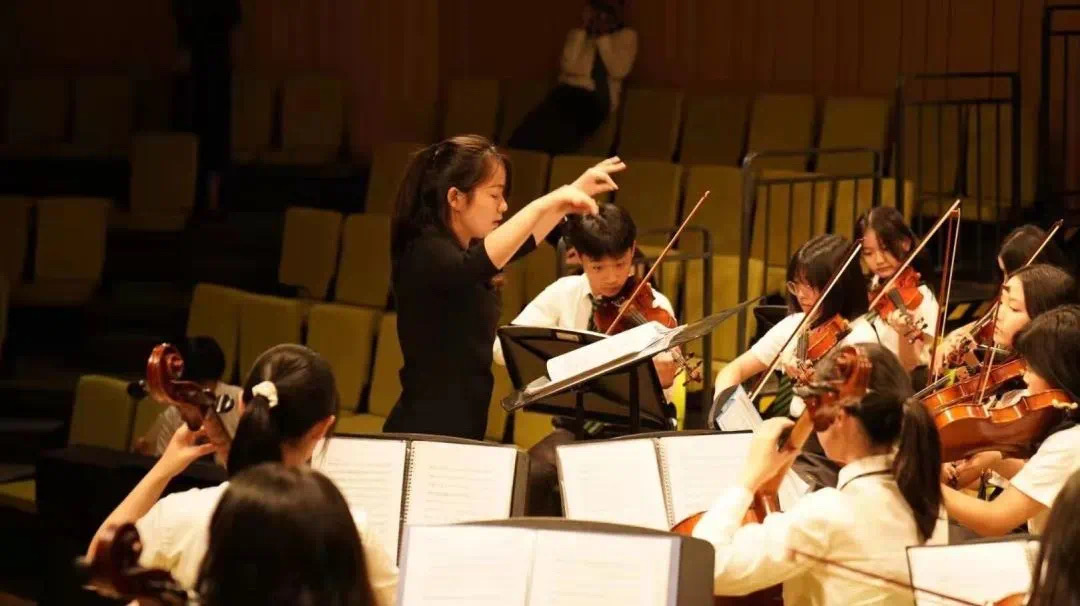As “A School for Tomorrow’s China” Pao School has always maintained a forward-facing outlook and spirit of continual improvement. An important aspect of this philosophy is to cultivate an environment that nurtures and supports teachers’ use of innovative teaching methods, based on whole-person education and subject integration – all in the name of providing students with the best learning experience. In addition, to build a community of active learners and collaborators amongst staff, the school also works to facilitate communication among teachers from different disciplines on all three campuses.
In order to promote learning and peer-to-peer exchange, Pao School teachers at the Middle School and High School take part in a mutual learning activity called “Teacher 2 Teacher” (T2T). For the activity, teachers from different subject areas take turns to share teaching practices and case studies with colleagues each week. Anthony Mulson, Middle School Director of Teaching and Learning, explains that peers can be the best resource for professional development, saying: "Educational development is often oriented toward external trainings, workshops, and outside programmes as sources of school improvement, but it is the culture of collegiality and consistent exchange of ideas within our immediate teaching teams that most directly promote experimentation, reflection, and growth. The innovative teaching demonstrated by HQ teachers was made possible by educators being proactive in their partnerships. Our teachers exploring new techniques together has transformed potential possibilities into good practice."
At the Middle School, T2T sessions give teachers from English, the arts, humanities, and science departments a chance to share their expertise on experiential learning. In a summary of the sessions, the teachers wrote: "Experiential learning promotes the interaction and application of knowledge in authentic contexts. Experience without knowledge is merely activity, and knowledge without experience remains theoretical. Designing learning experiences based on foundational knowledge promotes empirical understanding, providing students with a more meaningful education that will endure beyond the classroom.”

Y7 Students analysing pizza ingredients to reflect on the changes in agriculture through ancient Greece, Rome, and the New World.

Y7 science students designing amphibious bicycles.
In addition, the school also encourages project-based interdisciplinary teaching as a key innovative teaching method. On the Hongqiao campus, there are subject group meetings every week. During these meetings, teachers both discuss teaching content and update each other on ongoing projects, as well as exchange ideas on how to promote interdisciplinary work. At the beginning of this year, middle school’s professional learning center shared a teaching project that focused the fusion of sound and form, led by the Head of Middle School Art, Ms. Yunzhi Chen, and art teacher Lily Zhu. The project was themed around water, within which the students were asked, in teams, to perform musical pieces, create artwork, interpret the pieces, and evaluate their work.



Middle School Art Class
Ms. Zhu notes teachers at Pao School have always adhered to the concept of interdisciplinary integration. For instance, music, drama and visual arts teachers all believe that the respective abilities students master and demonstrate in these three subjects should be interlinked and three-dimensional, rather than separate and one-dimensional. With that in mind, teachers always work to integrate music and visual arts, and include content related to other subject within their teaching.

Middle School Concert
As they considered how to build the special class, Ms. Chen and Ms. Zhu felt that it was important to integrate Chinese elements and the characteristics of Pao School. Therefore, after reading different textbooks as well as referring to the music and art curriculum standards, they initially decided on theme of water. They selected water because of the virtuous characteristics with which it is associated: for instance, profoundness, courage, and fearlessness. In Chinese culture, water has a depth of symbolic significance, and has historically been shown in various art forms. For example, in music, "The Yellow River Cantata" is a well-known symphonic suite; and, in painting, the landscape work "A Land So Rich in Beauty" honours China’s iconic Great Wall and the endlessly rushing Yellow River. Conceptually, the topic of water works well from both an audio-visual standpoint and, at the same time, can also cultivate students' appreciation for China’s beautiful scenery and a sense of patriotism.

“A Land So Rich in Beauty” by Fu Baoshi and Guan Shanyue (image sourced online)
Ms. Chen noted that during the activity, the teachers found that middle school students still had some work to do to improve their ability to express their thoughts about musical works and paintings. For instance, their subject vocabulary needs to be broadened. Thus, the two teachers also used this opportunity to incorporate skill-building exercises to improve students' comprehensive appreciation of art works.
After a lengthy period of preparation, the project was designed for five class hours. In the demonstration session, the students were divided into groups of four, each with different roles: the performer, the painter, the interpreter, and the evaluator. Firstly, the groups needed to determine a theme under the topic of forms of water, the performer then selected musical pieces to play that would to reflect this theme. At the same time, the painter created an ink painting that also matches the form of water expressed by the theme of the group. The interpreter made a one-minute speech on the selected music segment and the ink painting, which also acted as an opportunity for the group to collaborate on writing style and artistic expression of language. Finally, the evaluators were active participants throughout this process, carrying out both self-evaluation and peer evaluation as required.
Student Works:
Anna, Hosei, Scarlett, William
The theme of our group's presentation is the “rushing of the river” and the physical form it takes. Scarlett selected the musical piece “Melody of the Yellow River”, which has a high-pitched melody with many undulations. The musical expressiveness is clearly layered, and the playing varies in mood from gentle to intense, allowing us to feel the full spectrum of musical emotion. In Anna's paintings, the interspersed use of medium ink and light ink add to the dynamism of the picture. The thick ink branches reunite the scattered vision. The use of dry brushes vividly reflects the feeling of splashing, just like "Melody of the Yellow River.” In the middle of the song, the atmosphere of the combined pieces fully comes together.

During this interdisciplinary study of music and visual arts, the students showed a strong interest in learning and actively participated in classroom activities. In the demonstration class, the groups assessed each other, exchanged ideas, and shared their experiences. As such, each member of the group had a sense of personal accomplishment from this cooperative learning, which also boosted the students' understanding of music emotion, art and cultural connotation.
——Chen Yunzhi, Head of Middle School Art
During the preparation process for the special class, which took about a month, Matthew Wu, the Head of the Mentors, and Chris Zhuang, Head of Middle School Academics, provided a lot of support and guidance to the teachers. Mentor Wu not only offered suggestions on topic selection, but also worked with Ms. Chen and Ms. Zhu to refine the lesson plan. In the end, the project also won the 3rd Shanghai Private Junior High School Young Teachers' Teaching Appraisal Group Award for "subject-themed project learning plan".
With regards to the school’s professional development initiatives for teachers, Ms. Zhuang said that the Middle School focuses on enhancing teachers’ skills and knowledge by both bringing expert resources onto campus and encouraging instructors to pursue enriching off-campus endeavours. For instance, on campus, in one-on-one settings, the mentors often provide targeted teaching guidance for both new and veteran teachers.
Readers can learn more about the important work of the Pao School's mentors here: Mentors play essential role in Pao School's growth.
Further, Pao School regularly invites teaching and research staff from other educational institutions in Shanghai to visit the Middle School where they can share their experiences. For example, last year, given the focus on "unit-based design,” the school invited Professor Yan Hanbing from East China Normal University to lead four sessions for Chinese teachers on "Understanding-Based Unit Design (UBD)".
In addition to inviting experts such as Professor Yan to come to campus, Pao School also encourages its teachers to have regular off campus exchanges. To that end, given that this year’s summer vacation coincides with the promulgation of new curriculum standards, the Middle School organised a summer online training for roughly ten Chinese teachers that focused on "concept-based curriculum and teaching."
These diverse professional development opportunities help our Chinese teachers keep abreast of the latest happenings in the field of education, enhancing their knowledge of important pedagogies and enriching their teaching ability, which benefits all within the YK Pao Middle School community.
—— Chris Zhuang
Dean of Middle School Academics